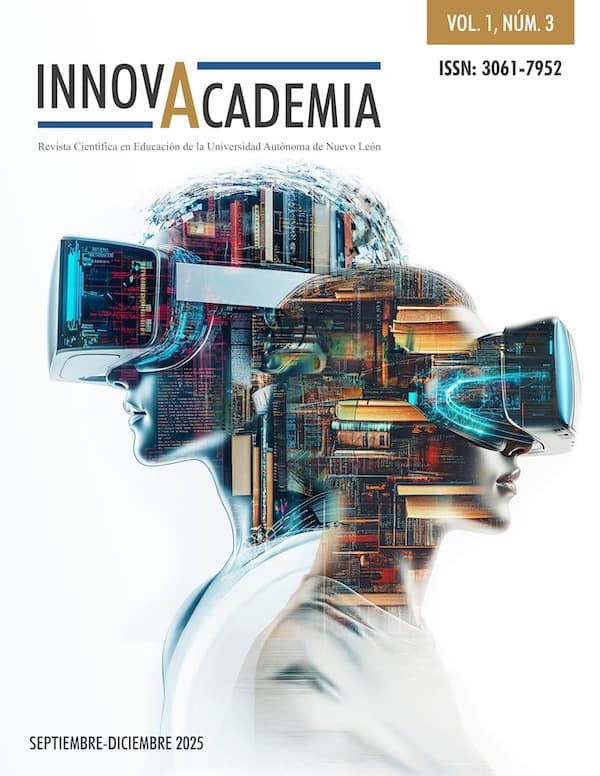A Comparative Analysis of Theoretical Models Explaining the Causes of Anxiety in Foreign Language Learning
DOI:
https://doi.org/10.29105/innoacad.v1i3.49Keywords:
linguistic anxiety, causes of linguistic anxiety, foreign languageAbstract
Linguistic anxiety is an affective variable in foreign language learning that influences students’ willingness to communicate in the target language. This article aims to analyze various studies on the causes of linguistic anxiety and to compare two fundamental theoretical models related to it. Using a qualitative approach, a literature review was conducted on research published between 2019 and 2024. The results identify causes such as fear of speaking in public, fear of making mistakes, fear of negative evaluation and inaccurate self-perceptions regarding performance. Additionally, the theoretical models analyzed, while still relevant, do not address current factors such as virtual instruction. It is proposed that they be updated by incorporating perspectives from socioemotional learning and the use of digital technologies as tools to reduce anxiety. Future research could focus on the design of pedagogical interventions that integrate digital tools to provide safe and constructive feedback environments.
Downloads
References
Arias-Odón, F. (2023). Investigación documental, investigación bibliométrica revisiones sistemáticas. REDHECS, 31(22), 9-28. https://dialnet.unirioja.es/servlet/articulo?codigo=9489470
Ccoicca, L. (2021). Ansiedad lingüística en las habilidades productivas del idioma inglés en estudiantes de primaria alta de la institución Innova School, 2020 [Tesis de maestría, Universidad César Vallejo]. Repositorio Digital Institucional. https://repositorio.ucv.edu.pe/handle/20.500.12692/58058
El-Hariri, Y. (2017). eTandem Language Learning and Foreign Language Anxiety among Colombian learners of German. Colombian Applied Linguistics Journal, 19(1), 22-36. http://dx.doi.org/10.14483/calj.v19n1.10219 DOI: https://doi.org/10.14483/calj.v19n1.10219
Fattahi, P., & Cuocci, S. (2022). Foreign Language Anxiety: A Review on Theories, Causes, Consequences and Implications for Educators. Journal of English Learner Education, 14(2), 1-29. https://stars.library.ucf.edu/jele/vol14/iss2/2
Garza, N., Carreón, M., & Pedraza, M. (2019). Exploring Foreign Language Anxiety through English Foreign Language learners’ perceptions. Verbum et lingua: Didáctica, lengua y cultura, (13), 94-112. https://doi.org/10.32870/vel.vi13.123 DOI: https://doi.org/10.32870/vel.vi13.123
Horwitz, E., Horwitz, M., & Cope, J. (1986). Foreign language classroom anxiety. The Modern Language Journal, 70(2), 125–132. https://doi.org/10.1111/j.1540-4781.1986.tb05256.x DOI: https://doi.org/10.1111/j.1540-4781.1986.tb05256.x
Krashen, S. (1976). Formal and Informal Linguistic Environments in Language Acquisition and Language Learning. TESOL Quarterly, 10(2), 157–168. https://doi.org/10.2307/3585637 DOI: https://doi.org/10.2307/3585637
Ortega, C. (2021). Profundizando en el modelo de Horwitz, Horwitz y Cope sobre ansiedad en el aprendizaje de una lengua extranjera. Revista de Educación de la Universidad de Granada, 28, 38-52. https://doi.org/10.30827/reugra.v28i.18162 DOI: https://doi.org/10.30827/reugra.v28i.18162
Pan, J., & Lou, L. (2023). Research on the Phenomenon of “Foreign Language Anxiety” based on Individual Differences of Learners. Creative Education, 14(9), 1759-1772. https://doi.org/10.4236/ce.2023.149113 DOI: https://doi.org/10.4236/ce.2023.149113
Serrato, D. (2021). Uso del tándem académico virtual como herramienta para aprendizaje autorregulado y competencia comunicativa oral en inglés [Tesis de doctorado, Universidad Autónoma de Nuevo León]. Repositorio Académico Digital. http://eprints.uanl.mx/22584/
Song, Z. (2024). Foreign Language Anxiety: A Review on Definition, Causes, Effects and Implication to Foreign Language Teaching. Journal of Education, Humanities and Social Sciences, 26, 795-799. https://doi.org/10.54097/4838f411 DOI: https://doi.org/10.54097/4838f411
Trinidad, B. (2016). Investigating affective factors and skill strategies of university students in English Language Oral Examinations [Tesis de maestría, Benemérita Universidad Autónoma de Puebla]. Repositorio Institucional. https://repositorioinstitucional.buap.mx/handle/20.500.12371/2329
Young, D. (1991). Creating a Low-Anxiety Classroom Environment: What does Language Anxiety Research suggest? The Modern Language Journal, 75(4), 426–437. https://doi.org/10.2307/329492 DOI: https://doi.org/10.1111/j.1540-4781.1991.tb05378.x
Downloads
Published
How to Cite
Issue
Section
License
Copyright (c) 2025 Mariana Carreón Zúñiga, Dan Isaí Serrato Salazar

This work is licensed under a Creative Commons Attribution-NonCommercial-ShareAlike 4.0 International License.
Los autores y autoras conservan los derechos de autor y otorgan a InnovAcademia el derecho de la primera publicación de sus trabajos, los cuales se publican bajo la licencia Creative Commons Atribución-NoComercial-CompartirIgual 4.0 Internacional (CC BY-NC-SA 4.0), por lo cual el usuario es libre de usar, compartir y adaptar el contenido de la revista siempre que se otorgue el crédito, no se use para fines comerciales, y se comparta cualquier material derivado bajo la misma licencia CC.
Política de Autoarchivo
Los autores y autoras pueden establecer acuerdos adicionales de licencia no exclusiva para la distribución de la versión publicada de su artículo o ensayo (por ejemplo, depositarlo en un repositorio institucional o incluirlo en un libro), siempre y cuando se mencione que la publicación original se realizó en esta revista.
Se permite y se alienta a los autores a publicar su trabajo en línea (por ejemplo, en repositorios institucionales o en su sitio web) antes y durante el proceso de envío, ya que puede conducir a intercambios productivos, así como a una citación más temprana y mayor del trabajo publicado (consulte El efecto del acceso abierto).






